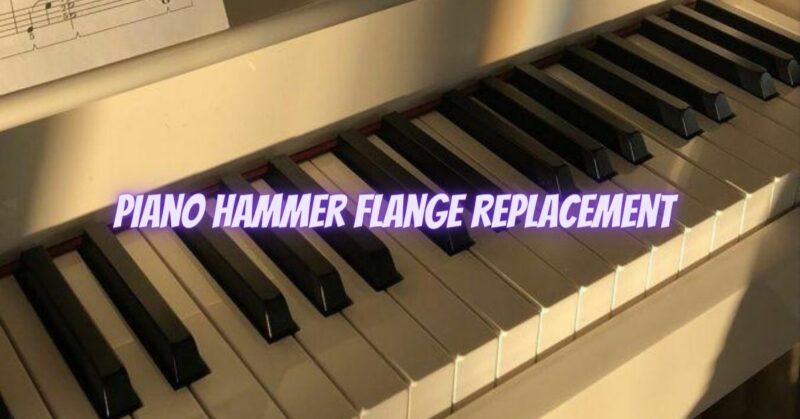Piano hammer flanges play a crucial role in the piano action, as they provide the pivot point for the hammer shanks, allowing them to move freely. Over time, hammer flanges can wear out or become damaged, leading to sluggish key response and uneven hammer movement. In such cases, replacing the hammer flanges is necessary to restore the piano’s performance. This article will guide you through the process of replacing piano hammer flanges.
1. Gather the Necessary Tools and Materials:
- To replace the piano hammer flanges, you will need a set of replacement flanges that match the original specifications of your piano. Additionally, gather screwdrivers, pliers, a hammer, and a piano action removal tool (if required).
2. Remove the Piano Action:
- In some pianos, removing the action might be necessary to access the hammer flanges. Follow the manufacturer’s instructions or seek guidance from a piano technician on how to remove the action safely.
3. Access the Hammer Flanges:
- Once the action is accessible, locate the hammer flanges beneath the hammer shanks. Hammer flanges are typically mounted on the action rail, and you may need to remove any screws or pins securing them.
4. Remove the Old Flanges:
- Carefully detach the old hammer flanges from the action rail. Use a screwdriver or pliers to remove any fasteners, taking care not to damage the surrounding components.
5. Install the New Flanges:
- Position the new hammer flanges in place on the action rail. Ensure that they align correctly with the hammer shanks and that they pivot smoothly. Secure the flanges with the appropriate screws or pins.
6. Check Hammer Alignment:
- After installing the new flanges, check the alignment of the hammer shanks. Make any necessary adjustments to ensure the hammer shanks move freely and are evenly spaced.
7. Reassemble the Action:
- If you removed the entire action, carefully reassemble it back into the piano. Follow the manufacturer’s instructions or seek assistance from a piano technician to ensure a proper fit.
8. Test the Piano Action:
- Once the action is back in place, test the piano to ensure that the new hammer flanges have restored the key response and action performance. Play each key and observe for smooth and even hammer movement.
9. Fine-Tune if Necessary:
- If you notice any issues with the key response or hammer movement, fine-tune the adjustments. Minor adjustments may be needed to achieve optimal playability.
10. Regular Maintenance:
- Piano hammer flanges, like other action components, require regular maintenance. Have your piano checked and serviced periodically by a qualified piano technician to keep the action in top condition.
Conclusion:
Replacing piano hammer flanges can significantly improve the playability and responsiveness of the piano action. While this task requires some technical knowledge and skill, it can be accomplished with patience and attention to detail. If you are unsure about the process, it is best to seek the assistance of a professional piano technician to ensure a successful and accurate replacement of the hammer flanges. A well-regulated and maintained piano action will contribute to a rewarding and enjoyable playing experience for pianists of all levels.


